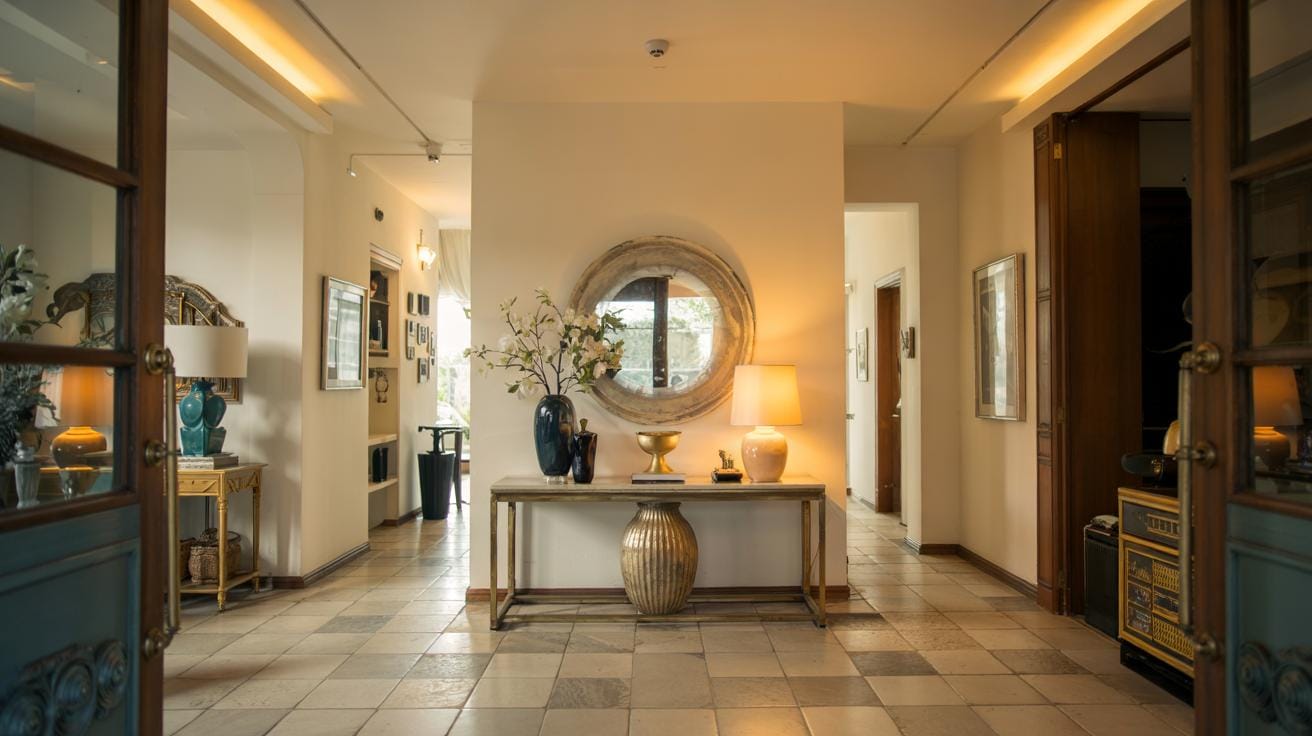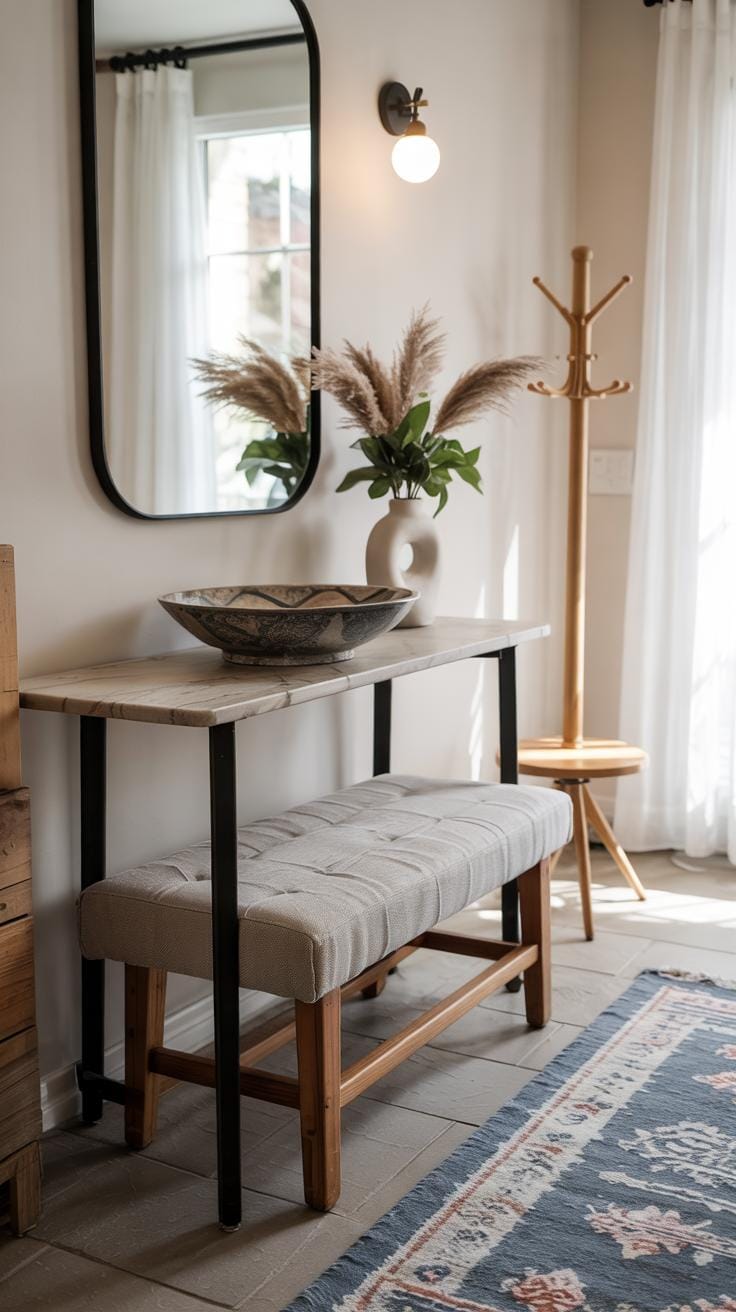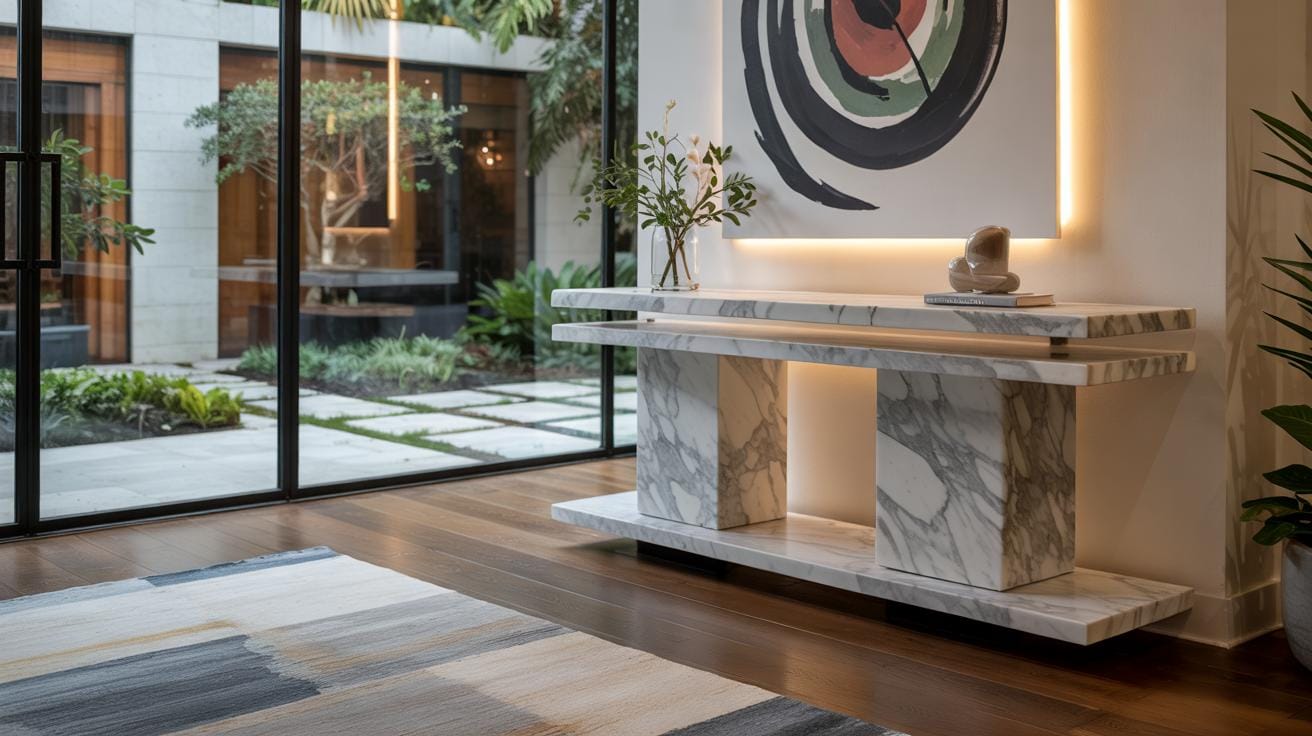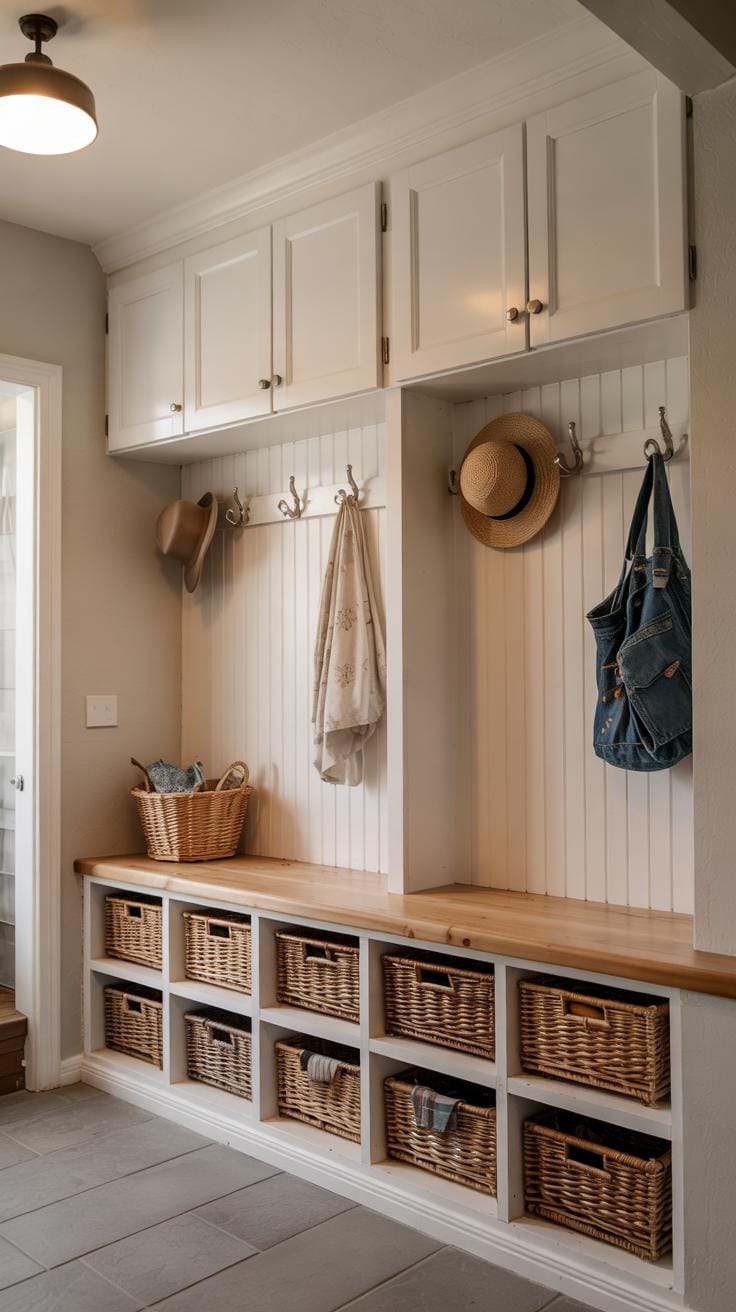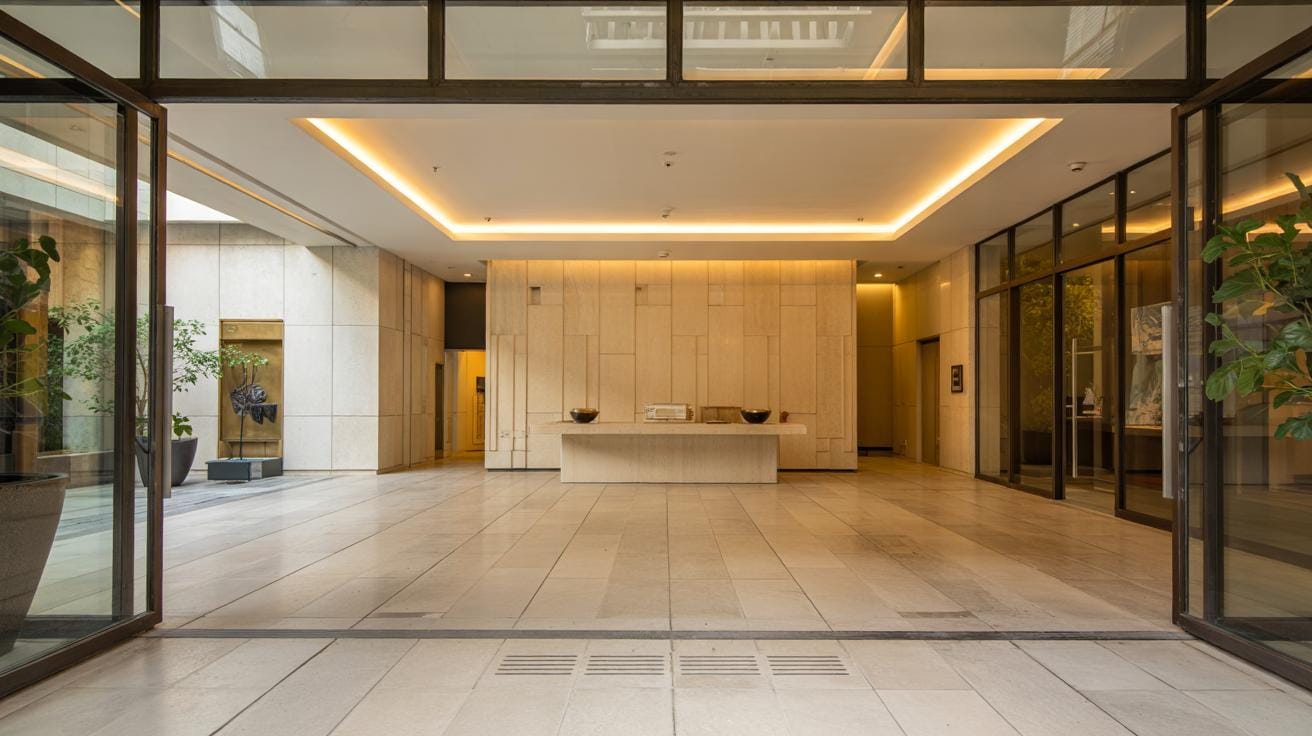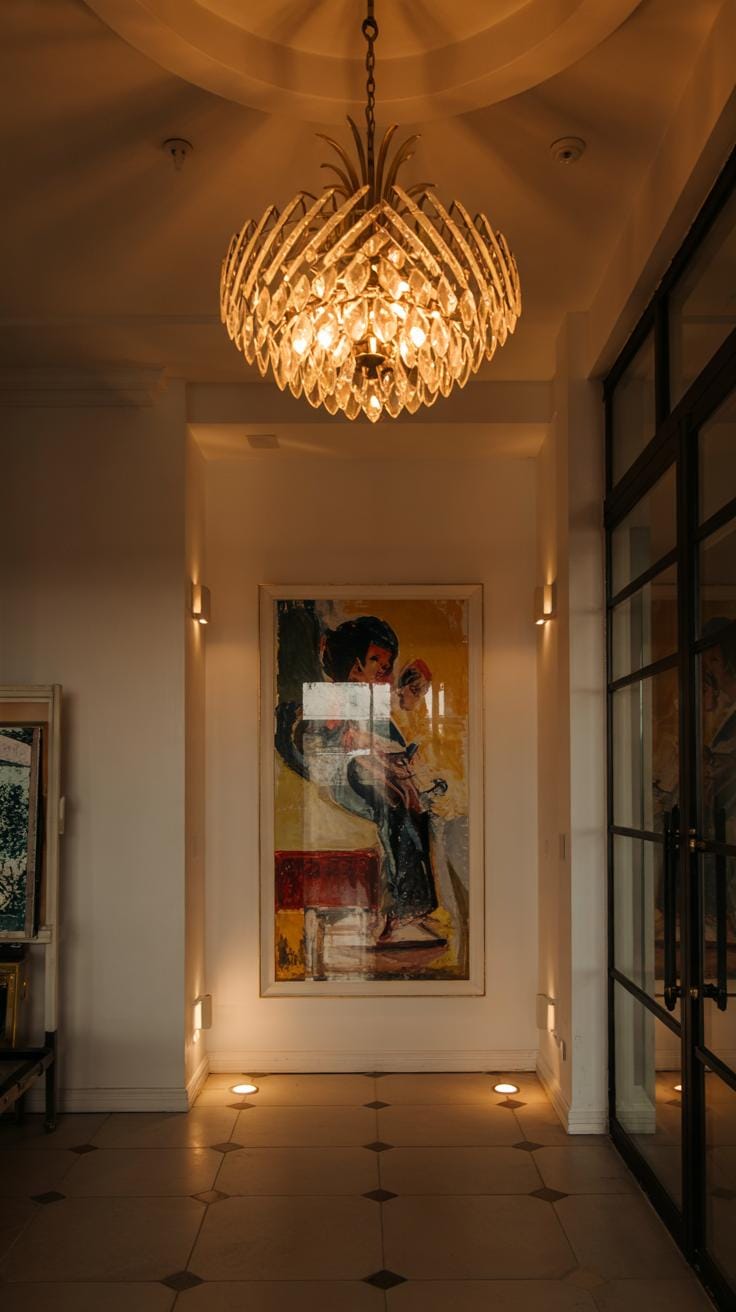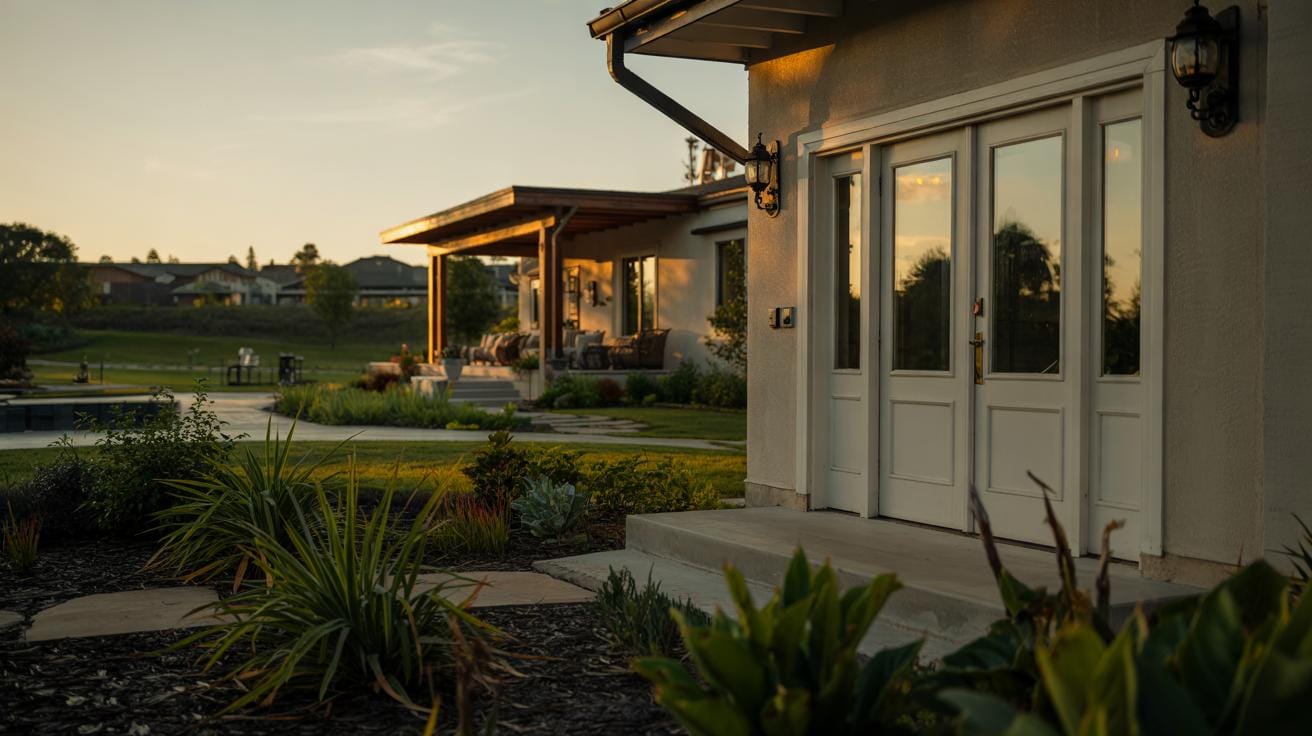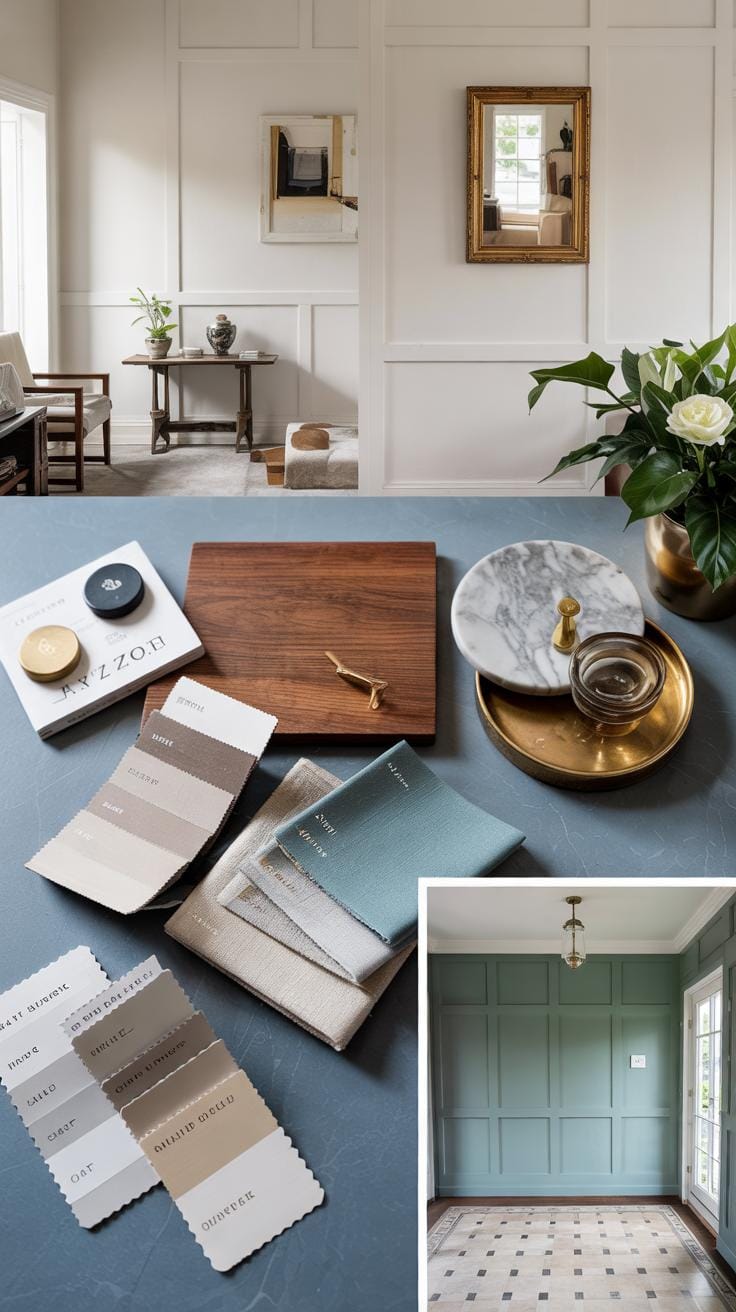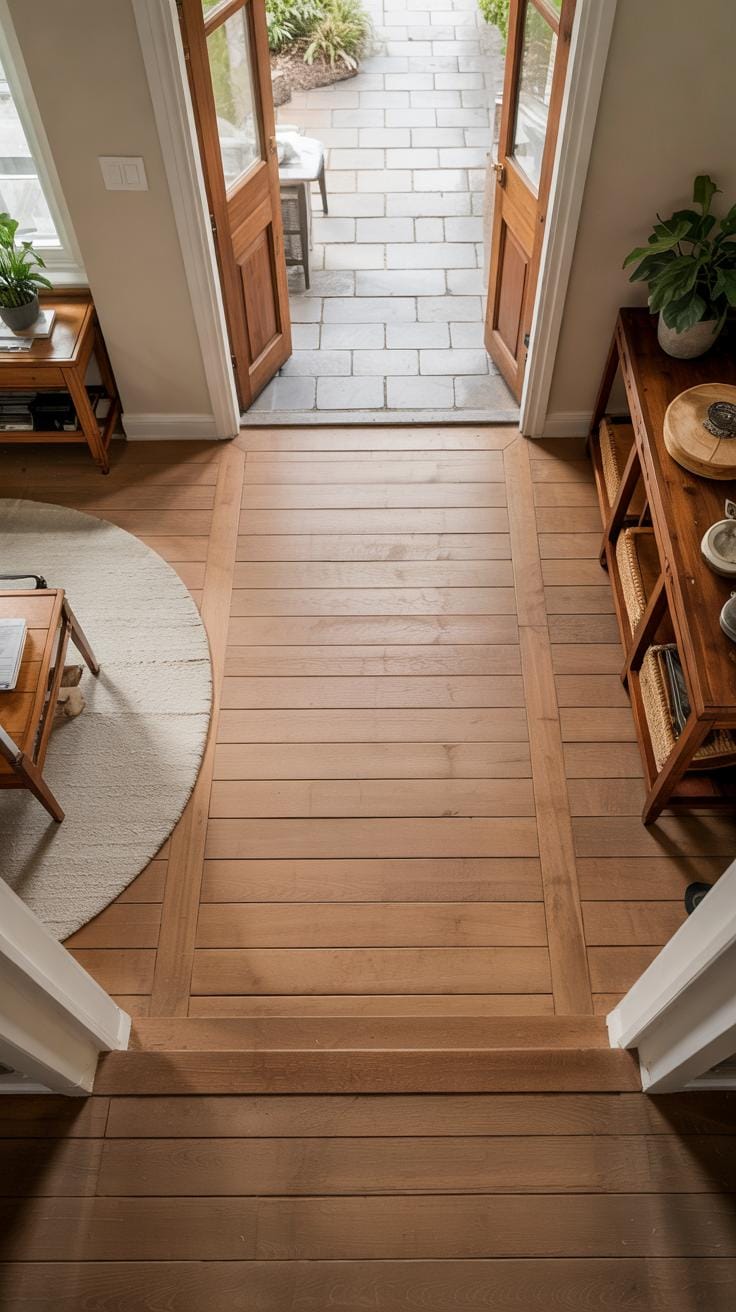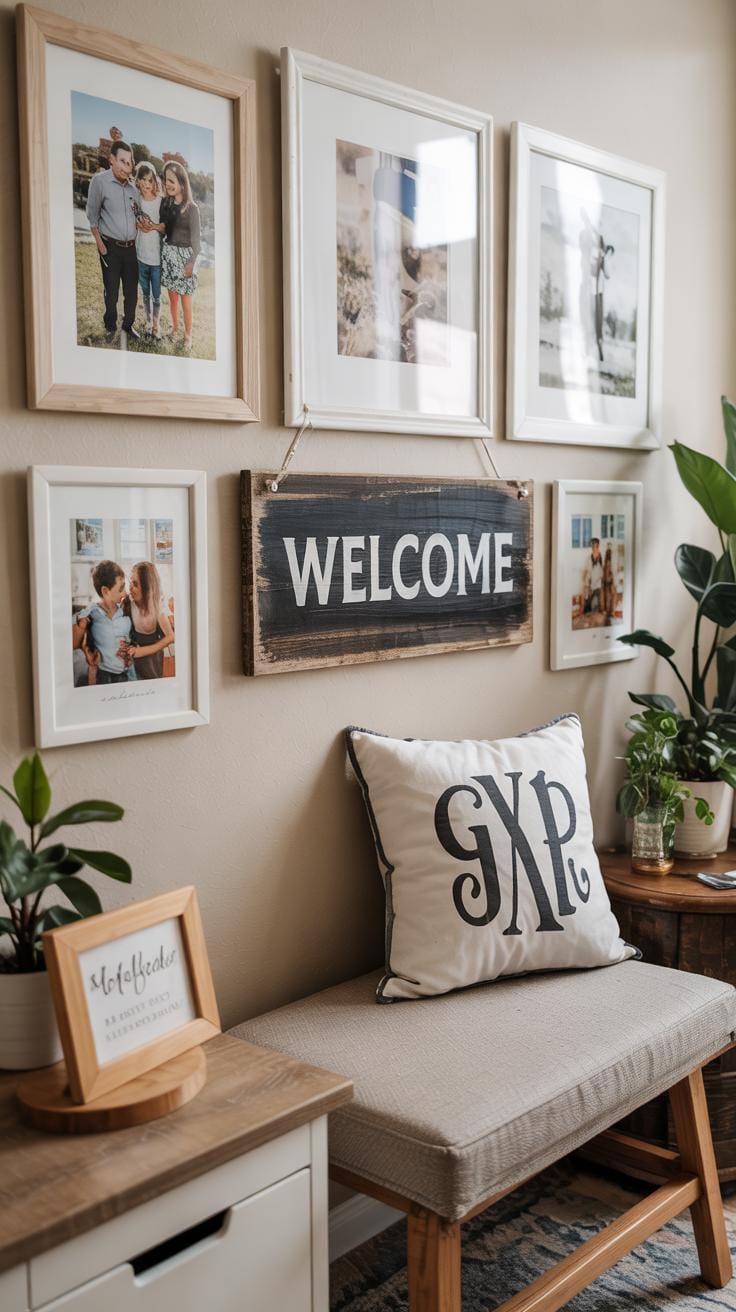Introduction
The foyer is the first thing you and your guests see when entering your home. It sets the tone for the rest of your interior design. A well-planned foyer combines style with functionality, making your entryway both inviting and useful. By focusing on smart design strategies, you can turn this often overlooked space into an organized and attractive area that welcomes everyone. This article looks at various tips to enhance your foyer, balancing aesthetics with utility to fit your lifestyle and space.
Maximizing space and style in a foyer can be challenging, especially if you have limited room. Effective use of furniture, lighting, storage, and decoration helps you achieve a beautiful yet practical entrance. Are you wondering how to make your foyer more spacious while keeping it stylish? This guide provides straightforward suggestions and ideas to help you make the most of your foyer, improve organization, and impress visitors from the moment they walk in.
Choosing the Right Furniture for Your Foyer
Your choice of furniture in the foyer shapes both the look and the feel of this important space. The right pieces enhance style while keeping the area useful and uncluttered. In a small foyer, compact furniture that serves more than one purpose works best. For example, a narrow bench with built-in storage offers a place to sit and hide shoes or bags.
Larger foyers allow for more flexibility. You might include a console table paired with a chair or a stylish coat rack. Look for multifunctional furniture to prevent overcrowding. Would adding a small cabinet that doubles as a display shelf improve your foyer’s appeal and function?
Choosing furniture that fits the space and meets your daily needs ensures visitors feel welcome while maintaining order. How can your furniture choices create a smooth transition from entry to living area in your home?
Multipurpose Furniture Options
Multipurpose furniture is a smart addition to any foyer. A bench with a hidden compartment offers both seating and storage, ideal for shoes, umbrellas, or seasonal items. Slim console tables with drawers help keep keys and mail organized while taking up little space.
Wall-mounted shelves with hooks bring extra storage without using floor space. Some designs combine seating and storage, like ottomans with lids or benches with cubbies underneath. These pieces help you avoid clutter and keep the entrance tidy.
Can you find furniture that covers more than one need while fitting the style of your home? Choosing the right multipurpose piece makes your foyer both practical and stylish.
Balancing Size and Proportion
Select furniture that suits your foyer’s size and shape to avoid overcrowding. Large pieces in a small hallway can block movement and make the space feel tight. Measure your foyer before buying and picture how the furniture will fit.
Choose scale-appropriate items. For narrow foyers, consider a slim console table instead of a bulky dresser. Round or oval furniture can soften edges and improve flow. Keep walkways clear by arranging furniture so people can pass easily.
Would rearranging or downsizing furniture improve daily use of your foyer? Paying attention to size and proportion helps you create an inviting entrance that balances style with comfort.
Maximizing Storage Solutions
Your foyer sets the tone for your home, so keeping it tidy matters. Storage solutions that suit your style make a big difference. Think about how much stuff enters through your door daily—shoes, bags, keys, and mail all need a place. Using vertical space clears up the floor and keeps clutter within reach.
Choose storage that matches your décor so it blends in. A sleek, wood-finished cabinet fits well in a traditional foyer, while metal and glass might suit modern designs. Open shelves or cubbies allow quick grab-and-go, while closed storage keeps items hidden but accessible.
Consider how you organize: Are baskets on shelves more useful for your family, or would drawers keep things neater? Can a storage bench double as a seat while collecting shoes inside? Ask yourself what items need daily access and plan your storage around that. Smart storage keeps your foyer looking good without sacrificing space or style.
Using Wall Space Efficiently
Wall space offers valuable room to store essentials without crowding your foyer floor. Install hooks for coats, hats, and bags so they stay off the ground. Hooks come in various styles and finishes to match your design, making them both practical and attractive.
Shelves provide spots for keys, mail, or decorative items without taking up floor space. Floating shelves save room and can be placed where you need them most. A hanging organizer with pockets can store sunglasses, gloves, or pet leashes, keeping small items organized and easy to find.
Think about how often you use items. Place hooks and shelves at heights that work for everyone, including kids. Could you use the space above the door frame or staircase wall? Using all available vertical space frees your foyer from clutter and makes it easier to keep clean.
Concealed Storage Choices
Hidden storage helps maintain a clean look by keeping stuff out of sight. Storage benches with lids let you sit comfortably while stashing shoes or bags inside. Cabinets with doors offer more organized spots for items you don’t want visible but still need handy access to.
Baskets slide under benches, fit on shelves, or tuck into nooks to hold loose items. Choosing baskets made from fabric or woven materials adds texture without clashing with your décor. Look for storage pieces designed to blend with your style so they don’t stick out.
Ask yourself what you want hidden: seasonal gear, umbrellas, or everyday clutter? Then pick furniture or accessories that store these items without shrinking your space. Clever concealed storage removes distractions and helps your foyer feel calm, tidy, and welcoming.
Lighting Ideas to Enhance Your Foyer
Lighting shapes how your foyer feels and functions. Bright light makes the space inviting and safe to navigate. Dimmer lights add mood and style. Using several types of lighting together brings balance.
Ambient lighting gives overall brightness. Think ceiling fixtures or flush mounts that wash light across the room. Task lighting focuses where you need it most, like near a mirror or coat rack. Accent lights highlight artwork or architectural details, adding personality.
Consider your foyer’s size and natural light. Choose bulbs that mimic daylight to boost energy in the morning. Or warm tones to create a cozy evening welcome. How can you layer different lights to transform your entry from plain to polished?
Layered Lighting Approach
A layered lighting plan combines ambient, task, and accent lights. Ambient lighting sets the general mood with even coverage. Task lighting helps you complete activities, such as grabbing keys or checking your appearance.
Accent lighting draws attention to special features, like a sculpture or a textured wall. Balancing these types prevents harsh shadows and overly bright spots. Layered lights make the foyer adaptable for day and night.
Can your lighting adjust to different needs? Using dimmer switches lets you control the brightness easily. Combining styles builds depth and interest in your entryway.
Choosing Fixtures That Complement Design
Pick lighting fixtures that suit your foyer’s style and size. Modern spaces call for clean lines like geometric pendants or recessed lights. Traditional foyers look great with chandeliers or lantern-style sconces.
Look for fixtures that balance form and function. A statement chandelier creates charm but should fit without crowding the space. Wall sconces add gentle light and free up ceiling height in tight foyers.
Materials and finishes matter. Brushed metal fits industrial looks, while wood tones warm a rustic design. Match fixture scale to your foyer’s dimensions—too large overwhelms, too small fades away.
Which fixture will enhance your foyer’s style while making it easier to use? Lighting shapes a welcoming entrance first seen by your guests.
Using Mirrors to Create an Illusion of Space
Mirrors can transform your foyer by making it seem larger and lighter. When placed thoughtfully, they reflect light and open up the room’s feel without taking up any extra space.
You might position a mirror where it faces natural light, like a window or the door. This placement doubles the brightness and enhances the airy atmosphere. Another smart spot is opposite a hallway or an entry point, where the mirror draws the eye and expands the visual field.
Choosing the right mirror style also matters. Round or oval mirrors soften the edges of a narrow foyer, while tall, rectangular mirrors help heighten the sense of space. Frames designed with simple lines keep the look fresh and don’t clutter the area.
Do you want your foyer to feel bigger and welcoming without extra furniture? Using mirrors with careful placement and style can give you that effect immediately.
Optimal Mirror Placement
Place mirrors directly opposite windows or doors to catch and reflect natural light. This creates a brighter entryway that feels open and fresh.
Another great spot is near a light source you installed in the foyer. The mirror bounces this light back into the room, reducing shadows and dark corners.
Consider positioning a mirror so it reflects a pleasant view like artwork or greenery outside. This adds depth and interest to the space, making it feel less confined.
Could an extra mirror opposite your door change how your space feels the moment you walk in? Try small adjustments to find the perfect angle that maximizes light and openness.
Selecting Mirror Styles
Choose mirrors that support the style of your foyer and add practical value. Round mirrors lighten sharp corners, ideal for tight spaces.
Tall mirrors with thin frames stretch the walls upward, enhancing height. Rectangular mirrors with metallic or wooden frames can provide a strong design statement without overwhelming the room.
If your foyer has a modern look, clean-lined frames or frameless mirrors work well. For classic or rustic styles, consider ornate or distressed frames to match the décor.
Think about how your mirror shape and frame contribute to both function and style. Which option complements your space while making it easier to check your appearance before heading out?
Choosing Colors and Materials for Your Foyer
Your foyer sets the tone for the rest of your home. The colors and materials you pick affect how spacious and inviting this area feels. Light colors help open up the space, creating a fresh and airy atmosphere. Consider soft whites, pale grays, or light beiges on the walls to reflect natural light and make the area appear larger.
When choosing materials, think about durability and ease of cleaning. This entryway is a high-traffic zone where dirt and moisture often gather. Select surfaces that resist wear and require little maintenance, like tile or vinyl flooring. For furniture, solid wood or metal with simple finishes works well because they don’t show wear quickly and are easy to wipe clean.
What colors and materials in your current space could you swap out to enhance both space and style? Experiment with finishes and shades that brighten the area while handling daily use. The right combination keeps your foyer practical and inviting.
Light and Neutral Colors
Light colors expand your foyer visually. They bounce light around, making even a small space feel open. Choose soft tones like cream, light gray, or sand that create a calm, clean look without overwhelming the room.
Neutral shades match almost any décor style. This flexibility helps you update your feminine or modern accents without repainting or replacing major elements. Lighter colors also hide dust and minor scratches better than darker tones, keeping the area looking tidy longer.
What light color could brighten your entrance while blending with your home? Testing paint samples on a small wall can show how your foyer responds to natural and artificial light throughout the day.
Durable and Easy-to-Clean Materials
Foyer floors need tough materials that handle dirt, water, and foot traffic. Porcelain tile offers stain resistance and comes in many styles. Vinyl planks mimic wood but resist scratches and moisture better. Both require minimal upkeep—just regular sweeping and mopping.
Choose furniture made from hard-wearing woods or metals. Avoid delicate fabrics that stain easily. Smooth surfaces clean quickly and help maintain a clutter-free look. For example, a wooden bench with a wipe-clean finish can double as seating and shoe storage.
How can you select materials that endure daily wear without sacrificing style? Focus on options that balance your lifestyle’s demands with the look you want for your entryway. Practical choices here save time and frustration in the long run.
Incorporating Decorative Elements Thoughtfully
Your foyer sets the tone for the rest of your home, but adding too many decorations can make it feel cramped. Focus on choosing items that express your style while keeping the space open and easy to move through. Think about what personal touches tell your story without crowding the area. A small piece of artwork or a mirror can add character without taking up floor space. Plants offer a fresh vibe and improve air quality without clutter. Items with clean lines and simple designs keep the space feeling calm. Ask yourself what you truly need and what makes you smile when you walk in. That balance creates a foyer that feels welcoming and stylish while staying practical.
Functional Décor Ideas
Look for decorative pieces that do double duty by adding style and function. A decorative tray on a console table can corral your keys, mail, and sunglasses. This helps keep your items organized and easy to find. A stylish umbrella stand near the door holds umbrellas neatly while serving as a design feature. Hooks or small baskets can hold hats and gloves without demanding much space. Choose pieces that match your décor and solve common clutter problems. Have you noticed how much easier it is to start your day when everything has a designated place near the entrance?
Keeping Décor Minimal and Purposeful
Limit the number of decorations to avoid overwhelming your foyer. Too many objects can block pathways and make the space feel smaller than it is. Select a few meaningful items that serve a purpose or bring you joy. Consider the flow of your entrance—will guests bump into pillows on a bench or stacks of books? Use vertical space to draw the eye upward while leaving the floor clear. A single statement mirror or a neat coat rack can make the space feel complete without adding clutter. What would you remove if your foyer felt crowded? Simplifying your decorations helps keep your entrance inviting and easy to use.
Optimizing Traffic Flow in Your Foyer
Arrange your foyer furniture and storage so people can move freely in and out of your home. Crowded entrances cause frustration and limit the space’s usefulness. Consider where people naturally walk and position items away from these paths.
Clear walkways help prevent jams when guests arrive or family members come home at the same time. How wide are your main paths? Aim for at least 36 inches between furniture for easy movement.
Think about how you use your foyer daily. Does placing a bench or shoe rack block the door? You may need to swap or shift pieces to keep the area open. Small changes, like moving a coat rack to a less busy spot, improve flow significantly.
Clear Pathways
Create walkways that are free of obstacles. Remove anything that interrupts the main route from the door inward. This includes oversized rugs that bunch up or furniture sticking out too far.
Wear-resistant, low-profile rugs work well to mark the entrance without obstructing steps. Store bulky items in closets or hidden storage rather than in the pathway. Ask yourself if guests can comfortably enter without squeezing sideways.
Strategic Furniture Placement
Choose lightweight or narrow furniture where space is tight. Place seating against walls or corners to keep the center open. A slim console table fits nicely without blocking door swings.
Position storage near the door but not directly in front of movement areas. Hooks can go above eye level, and baskets can slide under benches to save floor space. By placing items thoughtfully, you maintain function and room for foot traffic.
Personalizing Your Foyer Design
Your foyer is the first impression visitors get of your home. Use this space to express your personality without overcrowding it. Choose artwork that speaks to you, whether a favorite painting or a print that fits your taste. Position pieces where they enhance the space but don’t block movement.
Lighting can add character and warmth. Consider unique light fixtures like a statement pendant or wall sconces that mirror your style. They also improve visibility and create a welcoming atmosphere. Think about your daily routine—does this lighting help you find your keys or shoes easily?
Family photos add a personal touch. Display a select few in tidy frames on shelves or walls, avoiding too many that create clutter. Integrating practical storage with personal items, such as a stylish bench with hidden compartments, keeps the foyer organized while reflecting your character.
Adding Personal Touches
Displaying photographs or keepsakes in your foyer can feel overwhelming when you want to avoid mess. Choose a few meaningful items to showcase. Use matching frames or a gallery wall arrangement to keep the display neat and unified.
Floating shelves work well for small keepsakes without consuming floor space. Rotating items seasonally keeps the look fresh and prevents overcrowding. Use baskets or decorative boxes for smaller objects, so they stay organized but remain visible.
Ask yourself: Which memories or items best represent you without overwhelming your guests as they enter? Select only those pieces that balance sentiment and simplicity.
Combining Style with Function
Personal items do not have to be just decorative. Choose pieces that serve a purpose for everyday needs. For example, a vintage tray can hold mail and keys, while a decorative mirror helps you check your appearance before leaving.
Storage solutions like built-in cubbies or hooks styled to fit your aesthetic keep coats, bags, and shoes off the floor. Use artwork that doubles as a message board to keep reminders visible but contained.
Think about items that highlight your personality while supporting daily tasks. This balance keeps the foyer inviting and useful without turning it into a cluttered space. What practical object could also showcase your style?
Conclusions
Designing your foyer with both space and style in mind makes a lasting impression on guests and enhances your daily routine. Thoughtful choices in furniture, storage, and lighting lead to a clutter-free and welcoming environment. Introducing elements like mirrors and proper color schemes can visually expand your foyer, making it feel larger without sacrificing charm. Ultimately, the key is to keep your entrance functional without overwhelming the space.
Applying these foyer design tips allows you to tailor your entryway to your home’s needs and your personal style. Simple adjustments can create an organized and pleasant first impression. Consider how you and your family use the entrance and make adjustments that improve convenience and aesthetics. With deliberate planning, your foyer will efficiently manage traffic flow and welcome both residents and guests into a space that reflects your home’s personality.

